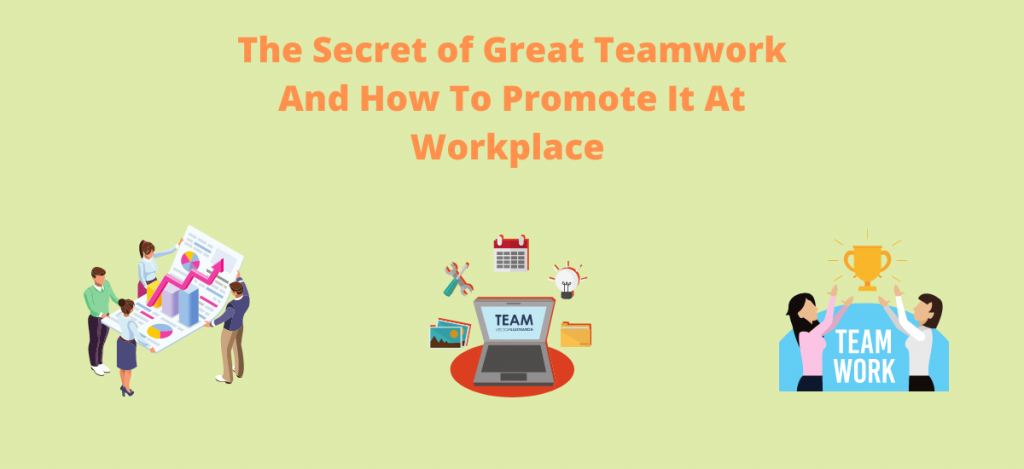In the not-so-famous words of Datio Specio about great teamwork, “I’m not better than you, you’re not better than me, but we’re better together…” “The oil of unity” “Together we stand, divided we fall” the unity quotes just go on and on. This could only mean one thing; there’s something there! “How could one chase a thousand, and two put ten thousand to flight…” Note that two doesn’t equal double the power; this is the definition of 10Xing. “For if they fall, the one will lift up his fellow: but woe to him that is alone when he falleth.” There are consequences to choosing aloneness. “You go alone, you go fast. You go with people, you go far.” Okay, I’m done with the quotes now. So hermit, beware!
If there’s anything that’s harder than dealing with people though; I don’t know. Maybe you can fill me in. Do you have natural charisma and people just latch on to your every word and care about what you care about? Then congratulations! You’re one of the 0.0000000000001% lucky few… lucky you. I’m exaggerating but you get my point. The most powerful tool in the world, unity of purpose, is highly inaccessible. But don’t you worry, I’ll show you where you can find it… and no, I’ll not ask you to look within. Just look below:
Key Questions in Fostering Great Teamwork
J Richard Hackman did a 15-year study on teams and groups in various modern settings and found that five conditions are critical to team success.
- First, is the group a real team, with clear boundaries, interdependence among members, and at least moderate stability of membership over time?
- Secondly, does the team have a compelling direction, a purpose that is clear, challenging, and consequential–and that focuses on the ends to be achieved rather than the means the team must use in pursuing them?
- Third, does the team’s structure–its task, composition, and core norms of conduct–enable rather than impede great teamwork?
- Fourth, does the team’s social system context provide the resources and support that members need to carry out their collective work?
- Lastly, is competent coaching available to help members get over rough spots and take advantage of emerging opportunities, and is such coaching provided at times in the team life cycle when members are most ready to receive and use it?
I’d like to squeeze these into three core conditions, assuming no.1 is in place and no. 5 is part of no. 3 below
- A Compelling Direction
- A Strong Structure
- A Supportive Context
He also noticed that modern teams are particularly more vulnerable to two destructive issues:
- “Us versus Them” mentality
- Incomplete information

1) Compelling Direction
The cornerstone of a great teamwork is focusing on a goal that motivates, directs, and engages its members.
Creating a visual representation of the goal and its milestones will help simplify and make it more palatable to the team members.
Make it challenging but not overwhelming.
The goal(s) should be meaningful to all its participants. In a setting where the team is 4D (Diverse, Dispersed, Digital and Dynamic), which is mostly the case these days, look for a unifying reward.
Money, peace, and love are among the most common unifiers (and dividers). Some would argue it’s hatred for China but I think they’re cute so I don’t agree with that.
How this will help us make more money so we can worry less about how to take care of our families and personal needs. How will our efforts translate into a greater sense of peace, or how can this help us get along better as a community, country, or even in the world. When you translate the goal into something more profound to the individual group member than just a completed task/project, it energizes them.
Make your whats and your whys clear. Show them how every task accomplished fits into the bigger picture.
2) Strong Structure
Pick a team with diverse skill sets. The more the merrier they say and you would imagine the faster the job will get done because you know, many hands make light work; but not quite.
Napoleon Hill in his book “The Laws of Success” introduced the concept of the “Mastermind”. This is a collective of individuals striving towards one goal and “sharing one mind” if you will. He cautions that a group of up to 8 (or 10 if you really have to) is ideal and anything more than that weakens the mastermind of a great teamwork. Studies show that large groups have more trouble communicating, increasing the chances of free riders and not to mention inciters and gossipers; who no one really needs.
Breaking up huge projects into smaller chunks that a team can control from start to finish increases their commitment and performance. The secret to riding a horse they say is to make it think it’s the one calling the shots. No one likes being told what to do. Lao Tzu even said, “When the best leader leads, the people say we did it ourselves”.
Cultivate unity to enhance great teamwork
Keep in mind that a shared mindset is imperative to prevent the “Us versus Them” mentality. This mentality could occur between subgroups or between the team and the management and leads to lower productivity and chaos, just to say the least. Cohesion is the priority. A shared identity and perception, shared occurrences and mutual dependence between subgroups and management creates a “we” mentality as opposed to an “Us versus Them”.
During meetings, have a structured-unstructured time where teams coagulate to discuss random and non-random issues. You can set aside the first 15 minutes of a meeting to discuss any concerns the team(s) may have, any good news, even personal events that one may need to share. This will help everyone feel heard and increase connection. This is key to building a great teamwork.
Establish clear rules of things members must always do and things they mustn’t do. E.g. Must always keep time, must not “not engage”.
Clear goals, roles, and responsibilities remove room for gray areas where everyone may think it’s someone else’s job to do something and that “someone else” has no idea it’s “his job”. This could waste a lot of valuable time while breeding anger and resentment.
3) Supportive context
Give them everything they need, to do what they need to do. Apart from material resources, an efficient information system where all questions asked receive accurate and timely answers, relevant feedback ensuring growth in areas the members may not even know needed growth. Apart from this, a reward system is in order. I’m not talking about a paycheck or finding profound meaning in the job. The good old gold star. That pat on the back, that, “good job Joe” goes a long way.
Be sure to avoid pinpointing errors unnecessarily. “Positive criticism” may injure the confidence of a team. Be slick about it and try dealing with smaller things you can tweak that can result in a natural adjustment of the great teamwork dynamics.
Make information accessible to everyone on the team. Meetings aside, have a platform (a digital or physical board) where you can place any new information. This reduces the need for interruptions while keeping everyone up to date to curb the “incomplete information” issue.
Evaluate
A well-oiled machine needs constant checks to know whether uuh… it’s well oiled. Assess the output, collaborative capacity, and individual development of the members.
Ask the members for their take on everything that’s going on and compare notes; team leader to members and members to each other for the most profound insights. Everyone has something to offer and this might lead to some great new ideas moving forward.
In the words of leadership consultant Myles Munroe; the modern leader leads from the center outwards, as opposed to from the top downwards. A friendly and cohesive working environment is what does the trick in these times. The “square” has lost his charm because thankfully, someone noticed that extreme formality limits vulnerability, and vulnerability increases connection. We’ve become a more casual society and this has its flaws, but as long as professionalism is maintained, connection can increase in this type of setting; making communication easier and keeping the oil of unity running that machine as it should.
There you have it, with the right approach, a well-defined structure, and a powerful management method; you’ve got yourself a winning team.
GO, TEAM and build great teamwork!!!
